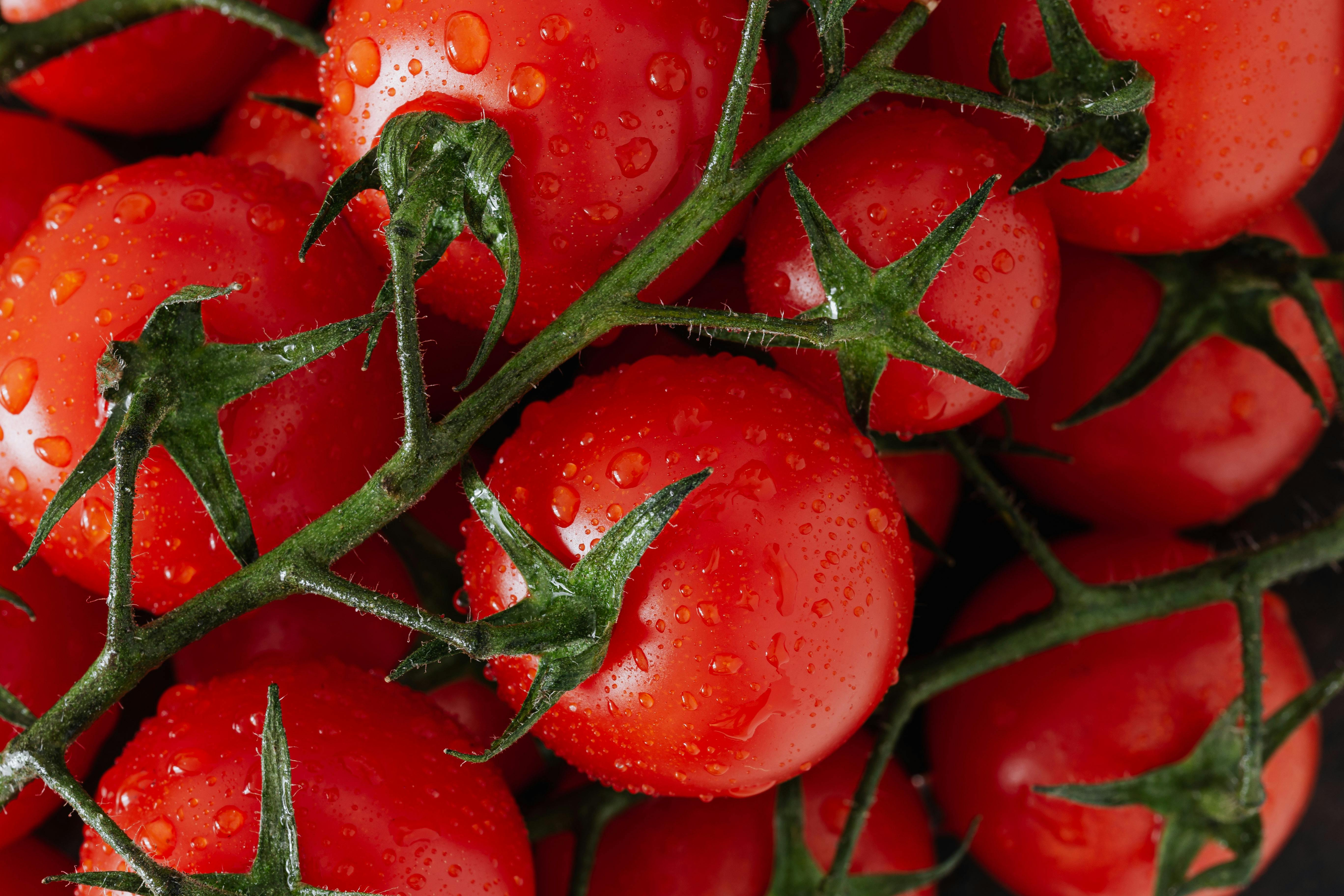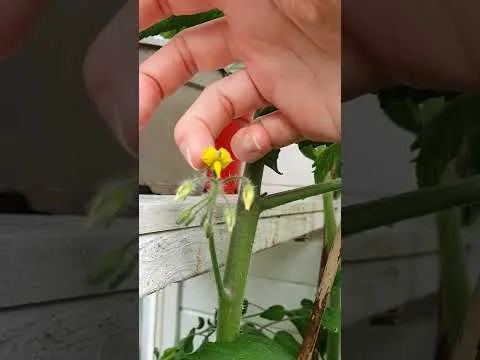Tomatoes are a popular vegetable in many cuisines and are an essential ingredient found in a variety of dishes. They are also very easy to grow in the garden, making them a popular choice for home gardeners. However, many gardeners may be wondering how long after a tomato plant blossoms until it begins to bear fruit. The time it takes for tomatoes to go from blossom to fruit can vary depending on the variety of tomato, the growing conditions, and other factors. In this article, we will discuss the factors that affect how long after tomato blossom to fruit and provide some tips on getting the best results.The length of time it takes for a tomato blossom to turn into a fruit depends on a few factors, including the variety of tomato, the temperature and humidity levels, and the amount of sunlight available. Generally, it takes between 35 and 45 days for a tomato blossom to turn into a mature fruit.
Factors that Impact Tomato Blossom to Fruit Transformation
Tomato blossom to fruit transformation is a crucial stage in the cultivation of tomatoes. In order for plants to produce quality tomatoes, there are several factors that need to be taken into consideration. These include temperature, humidity, soil fertility, light exposure, and pollination.
Temperature plays an important role in the tomato blossom to fruit transformation process. Tomatoes require warm temperatures for optimum growth and development. When temperatures are too high or too low, growth and development of tomatoes can be hindered. When temperatures are below 50°F (10°C), blossoms will not set fruit and when temperatures exceed 85°F (29°C), fruits can be stressed by the heat and may not develop properly.
High humidity can also impede tomato blossom-to-fruit transformation. Tomatoes need plenty of air circulation in order for flowers to open properly and for pollination to occur naturally. The higher the humidity level, the less air circulation there will be which can lead to issues with pollination as well as fungal diseases such as gray mold and powdery mildew.
Soil fertility is another factor that needs to be taken into consideration when it comes to tomato blossom-to-fruit transformation. Tomatoes require soil with good drainage and a pH between 6.0 – 7.0 in order for them to grow properly and produce quality fruits. Fertilizers should also be added regularly in order to provide adequate nutrition for tomatoes throughout their growing season.
Light exposure is essential for tomato blossoms as they need long hours of direct sunlight in order for them to open properly and produce quality fruits. If tomatoes are grown in shaded areas or if they receive less than 8 hours of direct sunlight each day, they may not have enough energy for them to flower or set fruit properly which can lead to stunted growth or poor yields at harvest time.
Finally, pollination is an important step during the tomato blossom-to-fruit transformation process as it allows pollen from one flower’s anthers (male parts) to fertilize a different flower’s stigma (female parts). In most cases this occurs through natural methods such as wind or insects but it can also be done manually by hand-pollinating each flower individually with a paintbrush or cotton swab dipped in pollen from another plant’s flowers.
In conclusion, there are several factors that play an important role in tomato blossom-to-fruit transformation including temperature, humidity, soil fertility, light exposure, and pollination which should all be taken into consideration when cultivating tomatoes successfully
Proper Care for Tomatoes in the Blossoming Stage
Tomatoes are a popular garden vegetable that require careful attention during the blossoming stage. This is the period between when a tomato plant’s first flowers appear and when it begins to bear fruit. During this time, proper care is essential for a successful harvest. Here are some tips for taking care of your tomatoes during the blossoming stage.
The most important thing to remember when caring for tomatoes in the blossoming stage is to provide them with plenty of water and nutrients. Tomatoes need at least one inch of water each week, and it’s best to water them deeply rather than frequently. Additionally, adding fertilizer or compost to the soil can help provide extra nutrients for your plants. Regular pruning can also help keep your plants healthy by removing dead or diseased branches and encouraging new growth.
It’s also important to protect your tomato plants from pests and diseases. Monitor your plants regularly for signs of pests or fungal problems, such as spots on leaves or wilting stems. If you spot any signs of trouble, take immediate action to address the issue before it becomes serious. For example, if you see aphids on your plants, you may need to spray them with an insecticidal soap or neem oil solution.
Finally, make sure your tomato plants get plenty of sunlight throughout the day. Tomatoes need six to eight hours of full sun each day in order to produce sweet fruits. If possible, provide some shade during midday when temperatures are highest.
By following these simple steps, you can ensure that your tomatoes thrive during their blossoming stage and produce a successful harvest!
Signs of a Healthy Tomato Plant
A healthy tomato plant should have dark green leaves that are uniform in shape and size. The leaves should be free of spots, blemishes, or other discolorations. Additionally, the stems should be strong and firm with no signs of wilting or discoloration. The flowers on a healthy tomato plant will be vibrant and full of color. They may also feature bees or other insects visiting them for pollination purposes. Finally, the tomatoes themselves should be plump and free from blemishes or rotten patches with a vibrant red color when ripe.
A healthy tomato plant can also have some signs of disease or pests, but you can usually tell if it is not serious by looking at the overall condition of the plant. If there are just a few small areas with spots or discolorations on the leaves, it is likely that it is just a minor issue that can easily be resolved with proper care. On the other hand, if there are large areas with yellowing leaves, wilting stems, or many spots on the tomatoes then it could indicate a more serious problem such as disease or pests that need to be addressed quickly to save the tomato plant.
Interpreting Visual Clues of a Tomato Plant
Tomato plants are popular garden plants that can be found in many home gardens. While they are relatively easy to care for, it is important to be able to interpret the visual clues that the plant gives off to determine whether it is healthy and thriving. Understanding the visual clues of a tomato plant can help you identify any potential problems and make changes accordingly.
One of the most important visual clues of a tomato plant is its leaves. Healthy tomato plants should have deep green leaves that are free from any discoloration or pest damage. If you notice any yellowing or brown spots, this could indicate a nutrient deficiency or pest infestation. It is important to take steps to address the issue quickly in order to ensure the health and vitality of your plant.
Another visual clue of a healthy tomato plant is its growth pattern. Tomato plants should have robust stems and branches that are vibrant green in color. If you notice any weak or spindly growth, this could indicate a lack of adequate sunlight or nutrients in the soil. It is important to adjust your care routine to ensure that your tomato plants are getting enough light and nutrients for optimal growth.
The size and shape of tomatoes can also provide some visual clues about their health and wellbeing. Healthy tomatoes should be firm and round with vibrant red coloration when ripe. If you notice any misshapen fruits or discoloration, this could indicate poor pollination or inadequate nutrition levels in the soil. It is important to take steps to address these issues as soon as possible in order for your tomatoes to reach their full potential.
By being able to interpret the visual clues that your tomato plants give off, you will be able to more effectively identify potential problems and take action accordingly. By understanding what your plants need, you can ensure that they remain healthy and vibrant throughout their growing season!

Common Issues that May Delay Tomato Fruiting
Tomatoes are a popular crop to grow in the garden, but sometimes they don’t produce fruit as expected. There are several common issues that may be delaying tomato fruiting, such as environmental conditions, nutrient deficiencies, and pest infestations.
Environmental Conditions
Tomatoes require warm temperatures and plenty of sunlight for best yields. Tomatoes will not produce much fruit if planted in cool or shady spots. Too much nitrogen fertilization can also prevent tomatoes from flowering and setting fruit. To ensure optimal conditions for fruiting, tomatoes should be provided with full sun (at least 8 hours per day) and well-draining soil.
Nutrient Deficiencies
Tomato plants need a balanced level of nutrients to produce healthy fruit. If the soil is deficient in calcium, magnesium, or iron, tomatoes may not flower or set fruit properly. Testing the soil for nutrient levels is the best way to determine if a deficiency exists and what steps need to be taken to correct it.
Pest Infestations
Pests like aphids, whiteflies, spider mites, and leafhoppers can cause problems for tomato plants that can delay fruiting. These pests feed on the leaves of tomato plants which can weaken them and prevent them from flowering or setting fruit properly. Keeping an eye out for signs of pests and taking steps to control them is essential for successfully growing tomatoes.
Diagnosing Problems with Fruiting Tomatoes
Diagnosing problems with fruiting tomatoes can be challenging, as there are many factors that can affect fruit production. The first step in diagnosing problems is to identify the symptoms. Common symptoms include fruit dropping before they mature, discolored leaves, yellowing of the bottom leaves, and poor fruit set. Once these symptoms have been identified, it is important to determine the cause of the problem and take steps to address it.
Environmental Factors
Environmental factors such as temperature and humidity can have a big impact on tomato plants. High temperatures can cause fruit to drop off early, while low temperatures can slow down growth and reduce yield. It is important to ensure that the plants are getting adequate water, especially during hot weather. Additionally, too much or too little fertilizer can also affect fruit production.
Troubleshooting Problems with Fruiting Tomatoes
Once environmental factors have been ruled out as a possible cause of the problem, other potential issues should be considered. Pests such as aphids or tomato hornworms can damage plants and reduce yields. Additionally, diseases such as blight or leaf spot may also affect fruit production. It is important to inspect plants regularly for signs of pests or disease and take steps to address any issues that may be present.
Finally, it is important to ensure that tomato plants are properly pruned and staked in order to promote healthy growth and maximize yields. Pruning away unhealthy or damaged leaves will help promote better air circulation around the plant which will allow for better absorption of nutrients from the soil. Additionally, staking tomato plants correctly will help support their weight and reduce fruit cracking due to over-ripening on the vine.
Enhancing the Speed of Blossom to Fruit Transformation
The process of turning blossoms into fruits is a critical step in the growth cycle of many plants. It is also one of the most time consuming steps, and if this process can be sped up, it could mean a significant improvement in crop yields and produce quality. To this end, scientists have been researching ways to enhance the speed of blossom to fruit transformation.
One approach to improving the rate at which blossoms turn into fruits is through genetic engineering. By manipulating the genetic makeup of a plant, researchers can modify its physiology and metabolism, resulting in faster fruit development. This method has been used successfully with some plants, such as tomatoes, but it may not be applicable to all species due to their unique genetics.
Another approach that has gained traction recently is using hormones or plant growth regulators (PGRs). By applying certain PGRs during specific developmental stages, researchers can accelerate the rate at which a blossom turns into a fruit. This method has proven successful in speeding up the process for some crops, such as apples and pears.
Finally, some scientists are exploring ways to use light intensity or photoperiods to control blossom-to-fruit transformation speed. By controlling how much light a plant receives during its growth cycle and manipulating photoperiods accordingly, researchers believe they can accelerate the rate at which blossoms turn into fruits. This method is still in its early stages and further research is needed before it can be implemented on a large scale.
Overall, there are several methods that scientists are exploring in order to enhance the speed of blossom to fruit transformation for various crops. While genetic engineering and PGRs have had success so far with certain plants, further research is needed before these techniques can be widely applied across multiple species. Additionally, more research is needed on light intensity manipulation before this approach can become viable for widespread use.

Conclusion
Tomatoes can take anywhere from 45 to 90 days after blossoming before they are ready to pick. The exact time depends on the variety of tomato, the weather, and other factors such as soil nutrition and watering. Home gardeners should be aware of this when planting tomatoes, as different varieties may require different amounts of time before they can be harvested.
It is also important to note that tomatoes that are too green when picked will not have the full tomato flavor and texture. This means that gardeners should wait until the tomatoes are fully ripe before harvesting them in order to get the best tasting tomatoes.
In short, when it comes to harvesting tomatoes, patience is key. By understanding how long after tomato blossoms it takes for a fruit to set, gardeners can ensure their plants are producing the best quality fruit possible.
In conclusion, it is important for home gardeners to understand how long after tomato blossoms it takes for a fruit to set in order to get the highest quality crop of tomatoes possible. Different varieties will take different amounts of time so it’s important to plan accordingly when planting one’s garden. With patience and care, home gardeners can enjoy an abundant crop of delicious ripe tomatoes!



